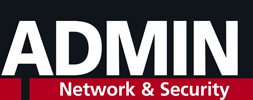
Lead Image © Konstantin Shaklein, 123RF.com
Managing infrastructure as code with Spacelift
Universal Tool
Administrators often first encounter the phrase "continuous development and continuous integration" (CI/CD) in the context of container-based setups with Kubernetes. Infrastructure as code (IaC) can also be on board as part of the strategy. IaC is exactly what the name suggests: the ability to describe a complete setup with a standardized format. Special software then reads this description and translates it into running resources, such as virtual instances or correctly configured containers.
Numerous corresponding tools are now on the market, some of which can be combined but that compete with each other in many respects, as well. Spacelift [1] looks to help administrators by offering nothing less than the glue for perfect integration of various tools in the form of standardized APIs and the ability to deploy initial production resources within minutes. Unlike other tools, the claim is that administrators don't need to spend weeks reading books and manuals to even test the tool.
Support is available for classics such as Pulumi and Terraform, as well as its fork OpenTofu. The developers have also put some thought into the cloud connection, which is, to all extents and purposes, the software's preferred deployment target. Spacelift can read its descriptions from Git, Azure DevOps, Bitbucket, and others. All kinds of major and minor helpers supplement the construct, supporting, for example, the enforcement of specific security rules, sophisticated monitoring, and monitoring of rolled-out resources. That sounds wonderful, but does it work in the real world? How complex is getting started with Spacelift, and how well does the published integration scope work?
Only for Hyperscalers
To get to the bottom of Spacelift, you first need a description of what Spacelift seeks to be and which features it doesn't even want to take
...Buy this article as PDF
(incl. VAT)
Buy ADMIN Magazine
Subscribe to our ADMIN Newsletters
Subscribe to our Linux Newsletters
Find Linux and Open Source Jobs
Most Popular
Support Our Work
ADMIN content is made possible with support from readers like you. Please consider contributing when you've found an article to be beneficial.







